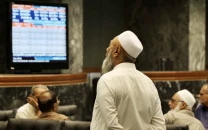Conspiracy theories – a constant threat to CPEC
Pakistan needs to ensure skills development, frame sound policies

CPEC route. PHOTO: REUTERS
Pakistan deems it necessary to control fiscal and current account deficits, generate employment, reduce poverty and move on the development ladder.
In this regard, a number of working groups has been formed to ensure a smooth implementation of CPEC.
The latest addition is the CPEC Business Council for Industrial Cooperation. The initiative is in line with the core objective of the project - economic well-being.
The whole philosophy of CPEC revolves around economic development and benefit-sharing. These are the undisputed and well-established objectives.
Unfortunately, CPEC could not enjoy the status of the common good for both countries. From the first day, it has become a victim of conspiracy theories.
PM Imran rounds off China visit with a raft of accords
The conspiracies were on two accounts - expectations of Pakistanis and opposition from the US, India, and others. Pakistan termed the project a game-changer, which lured people into thinking that it would turn around the economy in a year or two, five at most.
This misconception emerged in the wake of a lack of meaningful analysis due to limited access to information and proper research.
The government shared limited information in the beginning and even though it later improved on this front, it could not encourage a meaningful analysis. Conspiracy theorists have also benefited from the meaningless tussle among political actors. The then government gave the impression that it was only due to it that CPEC became a reality and other political parties were opposed to that.
This race for taking credit of CPEC and a lack of objective research led to false expectations. It also consumed much precious time, which must have been used for the development of a policy and implementation instruments to benefit from CPEC.
After six years of CPEC, Pakistan is still struggling to refine its investment policy and industrialisation process.
Last month, the government decided to develop a serious partnership with the real actors of industrialisation - the business community.
Pakistan also needs to develop a comprehensive Special Economic Zone policy, which is the key to the successful implementation of CPEC’s second phase.
The other side-effect of false expectations was the assumption that China would do everything and Pakistan would only reap the benefits. However, we forget that CPEC is an initiative taken with the basic objective of a win-win situation. It has been designed on economic principles and for the benefit of both.
The data of initial funding also demonstrated that Pakistan was contributing enormous financial resources for different projects.
In the conspiracy against CPEC, the US, India and their allies are opposing the initiative on the basis of baseless perceptions. They are also trying to pressurise Pakistan by threatening to impose sanctions.
The recent effort in this regard is the placing of Pakistan on the grey list by the Financial Action Task Force (FATF). It is negatively impacting the economy as it discourages investors and traders from engaging with Pakistan in business and trade. The US and India are also trying to portray Pakistan as a bad destination for investment or business.
Shaukat Aziz shares insights on the Belt and Road Initiative
A number of exaggerated projections are available in the market to show that Pakistan’s economy is going to slow down markedly in coming years. Pakistan’s debt is also being portrayed as a big threat to the economy and it is being linked with CPEC. However, it is a well-established fact that the current debt of Pakistan has nothing to do with CPEC.
Countering adversaries
It is feared that the campaign against CPEC, Pakistan, and China will pick up the pace during the second phase of the project. China and Pakistan need to be careful and take steps to tackle the propaganda.
The best answer will be to come up with sound implementation tools and execute plans effectively. To achieve the objective, the government will have to develop a to-do list according to the priority of CPEC’s long-term plan. Skill development must be the top priority as it is a prerequisite for industrial development and spreading the benefits of CPEC.
The second area of focus should be the development of a financial system, which can cater to the requirements of FATF and investors. It would be a painstaking exercise, but there is no alternative to that.
Lastly, the government, experts, media and other stakeholders will have to play their due role in highlighting the economic dimension of CPEC. It must be communicated to people that it is pure economic intervention on the basis of economic fundamentals.
To benefit from this, Pakistan will have to work on economic instruments and prerequisites like skills development, SEZ policy, trade policy, and investment regime, etc. It can only benefit from CPEC by coming up with the right set of instruments because it is an economic opportunity, not a charity.
THE WRITER IS THE CHIEF OPERATING OFFICER AT ZALMI FOUNDATION


















COMMENTS
Comments are moderated and generally will be posted if they are on-topic and not abusive.
For more information, please see our Comments FAQ